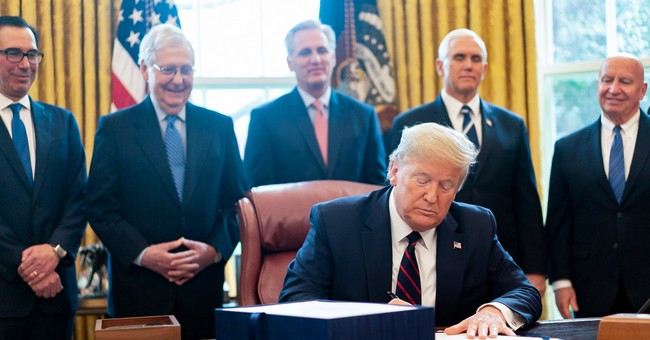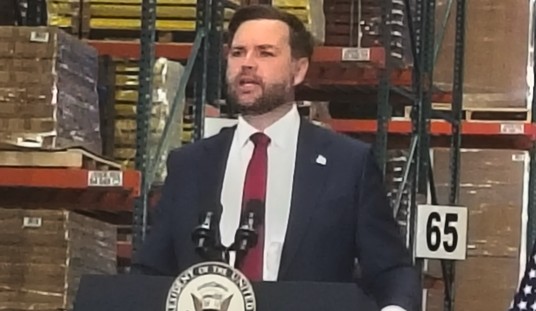
On July 6, 2020, the US Treasury and Small Business Administration (SBA) released records giving Americans a peek at where the massive Payroll Protection Program (PPP) overseen by the SBA went as part of the CARES Act to assist the US economy through the COVID-19 crisis in the first half of 2020.
The records shows information on 661,218 recipients of PPP loans that were valued greater than $150,000. This group represents the largest loans out of over 4.9 million loans made by the program. The program is estimated to have helped keep 31,456,513 workers on business payrolls. The PPP data release only constitutes 13 percent of the total number of loans made through the PPP program. The rest of the CARES Act went to 4.3 million other borrowers requesting lest that $150K in aid from the government.
CARES Act Benefit to US Economic Sectors
To some degree, the PPP program touched every aspect of the American economy. Many of these sectors could have collapsed and some lost many employees despite the efforts for the CARES Act. But, as the numbers show, the program was expansive.
The sector of the economy that received the greatest assistance was the information, finance, insurance, rental and leasing, professional services, management, and administrative support segment. The loan beneficiaries in this sector retained 6,464,838 jobs and were issued 160,662 loans.
The wholesale, retail, transportation, and warehousing sector followed with 5,039,775 jobs retained and 110,609 loans made.
Education and health care sectors were the third largest recipient of aid retaining 5,747,179 via 97,603 PPP loans over $150K.
Fourth in line, the mining, utilities, and construction industries were reported to have kept 3,459,696 people on the payroll through 92,668 loans.
The US manufacturing sector was fifth to benefit retaining an estimated 3,444,941 jobs issuing 68,643 PPP loans.
The arts and entertainment sector followed accounting for 4,535,171 jobs retained issuing 68,280 loans.
All other services except public administration, which includes repair and maintenance shops, personal care services such as barber shops and beauty salons, dental care, funeral services, dry cleaners, and other personal services as well as the vast universe of religious organizations, grantmaking and giving services, social advocacy organizations and the business, professional, labor, and political organization, were seventh in line recording 1,731,250 jobs retained issuing 39,685 PPP loans.
Of note, in the charity and advocacy sub-sector, PPP loans look to have kept many of these organizations afloat with the SBA’s records showing 447,857 jobs kept on the payroll via 8,423 loans.
America’s agricultural community was eighth in line, saving 491,134 jobs via 9,733 loans.
Trailing the pack, public administrators also retained 290,020 employees using 6,552 loans from the SBA worth over $150K.
Loans to unspecified industries round out the population accounting for 252,509 jobs retained using 6,783 loans.
The Top 10 Industries that Used PPP
There were three hundred thirty eight (338) industries that benefitted from the PPP loan program. It is arguable that some industries were saved from catastrophic failure. Here are the top ten workforces that were aided.
The restaurant industry received the greatest support from the PPP program. The data shows that 3,042,304 jobs in 44,825 companies were assisted.
Building equipment contractors were the second most aided industry with 888,055 jobs protected in 24,201 companies.
The offices of physicians received the third most aid from the PPP program retaining 880,950 workers at 22,315 businesses.
Auto dealerships were the fourth largest users of the CARES Act accounting for 816,205 employees retained at 14,682 dealerships.
Home health care companies received the fifth most amount of support keeping 657,675 persons onf the payroll at 7,407 operations.
Nursing homes were sixth in line for subsidies with the PPP program funding 604,665 workers at 6,248 firms.
Seventh to use PPP was the travel accommodations industry which includes hotels, motels, bed and breakfast inns, and casino hotels. They retained 592,248 at 8,889 firms.
Employment services, placement agencies, executive search firms, and temp agencies were eight keeping 573,277 people in the job at 6,014 firms making these SBA loans.
The architecture, landscaping, engineering, drafting, building inspection, surveying, and mapping industry was ninth. These companies used PPP to retain 559,813 employees at 15,379 firms.
Rounding out the top ten industries using CARES Act aid are the commercial and industrial machinery repair and maintenance companies. They subsidized 551,455 workers using 10,681 PPP loans
Top PPP Lenders
In total, four thousand three hundred eighteen (4,318) financial institutions participated in PPP lending including banks and credit unions. According to the SBA’s data, the following banks are credited with facilitating the retention of at least a quarter million persons in the work force each:
JPMorgan Chase Bank, National Association – 1,637,300 jobs
Bank of America, National Association – 1,469,458 jobs
Zions Bank, A Division of – 1,048,232 jobs
Truist Bank d/b/a Branch Banking & Trust Co – 828,522 jobs
PNC Bank, National Association – 730,757 jobs
KeyBank National Association – 558,511 jobs
Manufacturers and Traders Trust Company – 488,051 jobs
The Huntington National Bank – 481,931 jobs
U.S. Bank, National Association – 425,371 jobs
Fifth Third Bank – 398,629 jobs
BMO Harris Bank National Association – 318,409 jobs
TD Bank, National Association – 312,521 jobs
City National Bank – 293,618 jobs
Regions Bank – 250,414 jobs
This is the tip of a very big iceberg and the ability of the financial industry to mobilize to the need.
Other media outlets may concentrate on picking through the data looking for examples to note errors in lending and other things that may have gone wrong during the course of the PPP program. But they are missing the point, in my opinion.
These financial institutions kept millions employed who would not otherwise have been. And for that, they deserve, here in this article at least, a mention of thanks for their effort and the results they achieved.
Top PPP States
The State of California’s economy benefitted the most from the federal PPP loan program retaining over 4 million people on the state’s payroll who would have joined the ranks of the unemployed without it. Over 87 thousand California businesses applied for and received PPP loans to see them through the first COVID-19 lockdown.
Other states benefitted to lesser degrees with
Texas- 2,742,960 jobs and 52,150 loans,
New York – 2,044,978 jobs and 46,888 loans,
Florida- 1,867,084 joba and 42,207 loans,
and Illinois – 1,360,926 jobs and 27,412 loans
rounding out the top five states most aided by PPP in terms of job stabilization.
Implications for Economic Recovery
The CARES Act bought time for the nation to prepare constructive plans to re-open. This is an important consideration for state governments to ponder as they contemplate lockdown policy through the summer and into the fall.
The PPP program has ended. It is unlikely that the federal government will fund a second round of this type of CARES Act subsidy. That means that there’s no longer a way to keep these workers from falling onto the unemployment rolls if a governor chooses to maintain “stay at home” policies instead of finding a way to re-open their economy.
For those that fail to do so, it means that the CARES Act, and the debt America took on to fund it, will have been for nothing.













Join the conversation as a VIP Member